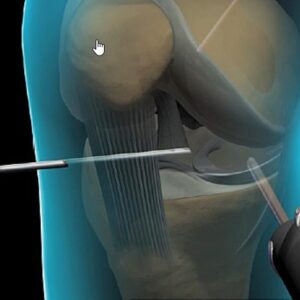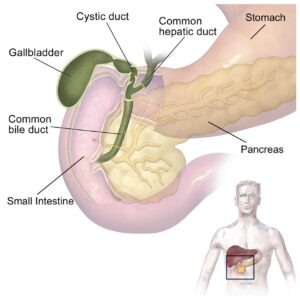Description
Familiarity with treatment
A bilateral thigh lift, also known as an outer thigh lift, is a cosmetic surgical procedure that aims to improve the appearance of the outer thighs, as well as the buttocks and waistline. The procedure involves removing excess skin and fat from the outer thigh area, resulting in a smoother and more toned appearance.
Here is a general overview of the procedure based on the information from the search results:
Anesthesia: The procedure begins with the administration of anesthesia to ensure the patient’s comfort during the surgery. The options for anesthesia include intravenous sedation and general anesthesia, which will be determined by the surgeon based on the patient’s specific needs.
Incision: The surgeon will make an incision that typically starts in the groin area and extends outward to the hip and lower back area. The exact incision pattern may vary depending on the patient’s individual case and the surgeon’s preference.
Fat Removal: Liposuction may be performed in conjunction with the thigh lift to remove pockets of excess fat in the targeted areas. This helps to further contour the thighs and achieve the desired results.
Skin Tightening: After the excess fat is removed, the remaining skin is pulled taut and sutured into place at the incision site. The surgeon will trim any excess skin to create a smoother and more toned appearance.
Scarring: As with any surgical procedure, scarring is a potential outcome. The location and extent of scarring will depend on the specific incision pattern used during the surgery. It is important to discuss scarring and potential scar management techniques with the surgeon beforehand.
Who is it suitable for?
A bilateral thigh lift, or outer thigh lift, is suitable for individuals who have excess skin and fat in the outer thigh area, as well as the buttocks and waistline. It is commonly performed on individuals who have experienced significant weight loss, aging, or genetic factors that have resulted in sagging skin and a lack of firmness in these areas.
The procedure may be suitable for individuals who:
Have excess skin and fat in the outer thigh area: A bilateral thigh lift targets the outer thighs, helping to remove excess skin and fat and improve the contour of the thighs.
Desire a smoother, more toned appearance: The procedure can address wrinkles, dimples, and sagging skin caused by excess skin and fat in the outer thigh area, resulting in a smoother and more toned appearance.
Have realistic expectations: It is important for individuals considering a bilateral thigh lift to have realistic expectations about the outcomes of the procedure. While it can provide significant improvements, it is essential to understand that individual results may vary.
Are in good overall health: Like any surgical procedure, a bilateral thigh lift requires individuals to be in good overall health to minimize the risk of complications and ensure proper healing.
Have consulted with a qualified plastic surgeon: Consulting with a qualified plastic surgeon is crucial to determine if a bilateral thigh lift is the right option for an individual’s specific needs. The surgeon will assess the patient’s suitability for the procedure and provide personalized recommendations based on their unique circumstances.
Who is it not suitable for?
A bilateral thigh lift, or outer thigh lift, may not be suitable for everyone. While each case is unique and should be evaluated by a qualified plastic surgeon, here are some factors that may make an individual not suitable for a bilateral thigh lift:
Poor overall health: Individuals who have significant medical conditions or multiple health issues may not be suitable for a bilateral thigh lift. It is important to be in good overall health to minimize the risks associated with surgery and anesthesia.
Unrealistic expectations: If an individual has unrealistic expectations about the outcome of the procedure or expects it to completely transform their body, they may not be suitable for a bilateral thigh lift. It is important to have realistic expectations about the results that can be achieved.
Unstable weight: Candidates for a bilateral thigh lift should have achieved a stable weight and maintained it for a period of time. Significant weight fluctuations after the procedure can affect the results and may require additional surgeries.
Smoking or tobacco use: Smoking and tobacco use can increase the risk of complications during and after surgery. Individuals who smoke or use tobacco products may not be suitable candidates for a bilateral thigh lift, or they may be required to quit smoking for a certain period before and after the procedure.
Insufficient skin laxity: Individuals with minimal excess skin or who have good skin elasticity may not require a bilateral thigh lift. Less invasive procedures such as liposuction may be more appropriate in these cases.
Limited mobility or chronic conditions: Certain conditions or limited mobility may affect an individual’s ability to undergo surgery and recover properly. It is important to discuss any existing chronic conditions or mobility limitations with a plastic surgeon to determine suitability for the procedure.
Pregnancy or plans for future pregnancy: Pregnancy can cause significant changes in the body, including weight gain and skin stretching. It is generally recommended to postpone a bilateral thigh lift until after completing all desired pregnancies.
Advantages
Advantages of a bilateral thigh lift, or outer thigh lift, can include:
Improved Contour: A bilateral thigh lift can help improve the contour of the outer thighs, buttocks, and waistline. It removes excess skin and fat, resulting in a smoother and more toned appearance.
Addressing Multiple Areas: The procedure targets three common problem areas: the thighs, buttocks, and waistline. By addressing these areas together, a bilateral thigh lift can provide comprehensive results.
Enhanced Appearance: Excess skin and fat in the outer thigh area can cause wrinkles, dimples, and sagging. A bilateral thigh lift can remove these imperfections, resulting in a more youthful and aesthetically pleasing appearance.
Customizable Approach: The incision patterns and techniques used in a bilateral thigh lift can be tailored to the individual’s needs and preferences. This allows for a personalized approach to achieve the desired results.
Potential for Liposuction: Liposuction may be performed in conjunction with a bilateral thigh lift to remove pockets of excess fat in the targeted areas. This can further enhance the contour and overall results of the procedure.
Complications
Complications associated with a bilateral thigh lift, like any surgical procedure, can occur. It’s important to be aware of potential risks and discuss them with a qualified plastic surgeon. Here are some complications that may be associated with a bilateral thigh lift, based on the information from the search results:
Scarring: Scarring is a common outcome of any surgical procedure, including a bilateral thigh lift. The incisions made during the surgery will result in scars. The length and pattern of the incisions can vary depending on the extent of correction required and the surgeon’s technique. It’s important to discuss scar management techniques with the surgeon before the procedure.
Wound Healing Issues: Complications related to wound healing, such as infection, delayed healing, or poor wound closure, can occur. Following proper wound care instructions and keeping the incision sites clean and protected can help minimize the risk of these complications.
Fluid Accumulation: Fluid buildup, known as seroma, can occur after a bilateral thigh lift. This may require additional medical care, such as percutaneous drainage or surgical excision, but corrective surgery is rarely necessary.
Changes in Sensation: Temporary or permanent changes in sensation, such as numbness or altered skin sensitivity, may occur in the treated areas. These changes are typically temporary but can persist in some cases.
Unsatisfactory Results: While a bilateral thigh lift can provide significant improvements, individual results may vary. It’s important to have realistic expectations about the outcomes of the procedure and discuss them with the surgeon beforehand.
Complications related to Anesthesia: Anesthesia carries its own risks, and complications such as adverse reactions to anesthesia or medication can occur. The anesthesiologist will evaluate the patient’s medical history and take necessary precautions to minimize these risks.
Bleeding: Excessive bleeding during or after the surgery is a potential complication. The surgeon will take measures to control bleeding during the procedure and provide instructions on how to manage it postoperatively.
Poor Cosmetic Outcome: In some cases, the desired cosmetic outcome may not be achieved. This can be due to factors such as individual healing response, skin quality, or other factors that may affect the final result.
preoperative care
Preoperative care refers to the physical and psychosocial care provided to prepare a patient for surgery safely. The specific preoperative care can vary depending on the type of surgery and the individual patient’s needs. Here are some general aspects of preoperative care based on the information from the search results:
Medical Assessment: Before surgery, a healthcare provider will assess the patient’s overall health and fitness for surgery. This assessment may include a review of medical history, physical examination, and relevant tests or investigations.
Patient Education: Patients are provided with information about their surgical procedure, including what to expect before, during, and after the surgery. This education may cover topics such as preoperative fasting, medication management, postoperative pain management, and any necessary lifestyle modifications.
Preoperative Testing: Depending on the patient’s medical condition and the type of surgery, various preoperative tests and clinical assessments may be conducted. These tests can include blood tests, imaging studies, electrocardiogram (ECG), and other specific evaluations to ensure the patient is in optimal condition for surgery.
Medication Management: The healthcare team will review the patient’s current medications and provide instructions on which medications to continue or discontinue before the surgery. This may include adjustments to medications such as blood thinners or diabetes medications.
Preparation for Anesthesia: If the surgery requires anesthesia, the patient will be evaluated by an anesthesiologist or anesthesia provider. This evaluation helps determine the appropriate anesthesia technique and ensures the patient’s safety during the procedure.
Preoperative Instructions: Patients will receive specific instructions regarding preoperative fasting, hygiene, and any necessary preparations before the surgery. These instructions may include guidelines on when to stop eating or drinking, bathing with antiseptic solutions, and avoiding certain medications or substances.
Consent and Documentation: Informed consent is obtained from the patient or their legal guardian before the surgery. The consent form outlines the risks, benefits, and alternatives of the procedure. It is important for all necessary parties to sign the consent form and ensure it is properly documented in the patient’s chart.
Psychosocial Support: Preoperative care also involves addressing the patient’s emotional and psychological well-being. This may include providing emotional support, addressing anxiety or fears, and ensuring the patient feels comfortable and informed throughout the process.
Postoperative care
Postoperative care refers to the care provided to a patient after surgery to promote healing, manage pain, prevent complications, and support the patient’s recovery. The specific postoperative care can vary depending on the type of surgery and the individual patient’s needs. Here are some general aspects of postoperative care based on the information from the search results:
Pain Management: Pain management is an important aspect of postoperative care. The healthcare team will assess the patient’s pain levels and provide appropriate pain medications or interventions to ensure their comfort. This may include oral pain medications, intravenous pain medications, or other techniques such as regional anesthesia or patient-controlled analgesia (PCA).
Wound Care: Proper wound care is crucial to prevent infection and promote healing. The healthcare team will provide instructions on how to care for the surgical incisions, including cleaning techniques, dressing changes, and signs of infection to watch for. It’s important for the patient to follow these instructions carefully.
Monitoring Vital Signs: The patient’s vital signs, such as heart rate, blood pressure, respiratory rate, and oxygen saturation, will be monitored closely during the postoperative period. This monitoring helps identify any potential complications or changes in the patient’s condition that may require further intervention.
Mobility and Ambulation: Depending on the type of surgery, early mobilization and ambulation may be encouraged to promote circulation, prevent blood clots, and support recovery. The healthcare team will provide guidance on when and how the patient can safely start moving and performing activities.
Fluid and Nutrition Management: Adequate hydration and nutrition are essential for healing and recovery. The healthcare team will monitor the patient’s fluid and nutritional status and provide guidance on appropriate intake. In some cases, intravenous fluids or nutritional supplements may be necessary.
Respiratory Care: Patients who undergo certain types of surgery, particularly those involving the chest or abdomen, may require specific respiratory care. This may include deep breathing exercises, incentive spirometry, or the use of breathing devices to prevent respiratory complications.
Medication Management: The healthcare team will manage the patient’s postoperative medications, including pain medications, antibiotics, and any other necessary medications. They will provide instructions on when and how to take these medications and monitor for any potential side effects.
Patient Education and Discharge Planning: Throughout the postoperative period, the healthcare team will provide ongoing education to the patient and their caregivers. This education may include information on postoperative restrictions, signs of complications, follow-up appointments, and any necessary lifestyle modifications. Discharge planning is also a part of postoperative care, ensuring that the patient is ready to be discharged from the hospital and has appropriate support and resources for continued recovery at home.





Reviews
There are no reviews yet.